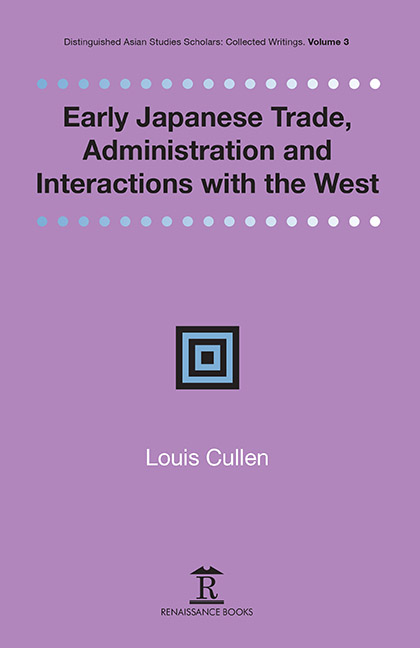7 - Coastal Trade: Statistics of Tokugawa Coastal Trade and Bakumatsu and Early Meiji Foreign Trade. Part 1: Coastal Trade in Tokugawa Times
Published online by Cambridge University Press: 30 April 2022
Summary
EVALUATION OF ARCHIVAL sources on Japanese trade in the Tokugawa period and the first fifteen years of the Meiji period is the primary purpose of this two-part essay, of which Part 1 appears on the following pages and Part 2 will appear in Japan Review, Number 22. Surviving Japanese statistics of coastal trade (or “inland” trade, as opposed to foreign trade) are remarkable. In Europe, comparable figures were not compiled. For Osaka, some count appears to have been kept of a variable number of import items, and probably also of six sensitive “exports,” that is, items shipped from Osaka to Edo. Counting in 1714, 1736, and 1766 yielded aggregate figures of the total trade of the port – rare statistics today, for other totals have not been passed down to us. For Edo, a consumption center, figures for outward shipping were never compiled. The only known coastal trade statistics for Edo are for the years 1724–1730, during which eleven items were recorded in Osaka (outwards) and in Edo (inwards), 1726 and 1856, for which a massive return survives. As for foreign trade, after the opening of the ports in 1859, statistics were directly compiled by bakufu officials from traders’ invoices. Previously the officials had relied on data furnished by tonya and guilds for coastal trade.
1. Trade Statistics
Japanese trade is unusual in terms of its statistical documentation. In a mineral-rich country, balance of trade considerations in the European mercantilist sense did not arise. Some record of foreign trade was maintained only because of the fear that without control foreign demand would carry away the precious metals required for the domestic currency. But this was more a process than a rigorous general quantitative counting, and the surviving details reveal that there was little if any creation of general aggregates. Those details often exist only in Dutch records. What survives of the work of the Nagasaki Kaisho , a bakufu office in Nagasaki for trade matters that in 1715 was expanded and given the added function of buying and selling commodities, consists of business accounts rather than a quantitative count of trade itself.
- Type
- Chapter
- Information
- Publisher: Amsterdam University PressPrint publication year: 2020



